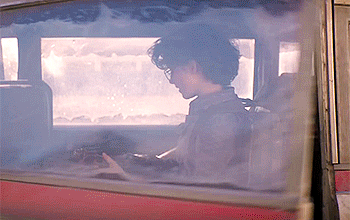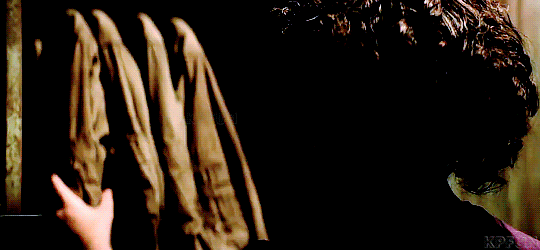
Ghostbusters: Afterlife
Directed by Jason Reitman
Written by Jason Reitman and Gil Kenan
Starring Finn Wolfhard, Mckenna Grace, Logan Kim, and Carrie Coon
(Oh, and of course, Paul Rudd plus surprises)
124 Minutes
Reber’s Rating: 97/100
I’m not sure why grumpy aging movie critics whose childhoods are locked away in the recesses of their brains find it necessary to tell people to avoid Ghostbusters: Afterlife. That the film is lackluster, unnecessary, and serves as just “fan service.”
Excuse me but – “fan service“? In case the critics forget, director Jason Reitman grew up a child of the franchise. His pappy, the indominable Ivan Reitman, directed the 1984 and 1989 installments that are deemed classics. The younger Reitman even showed up for a hot minute as a bratty kid in Ghostbusters II muttering, “My dad says you’re full of crap.” (Maybe a line he could throw back at naysayers nowadays?) The 1984 original is easily a top-five comedy film of all time, ranking up there alongside Blazing Saddles, both films introducing audiences in a new brand of comedy that would define a generation.
Look, I’m 37 years old now. I wouldn’t call myself a movie critic – I simply review films from a fan’s standpoint. Always have, always will. But I was of an age in the late 1980’s that I wasn’t able to see either film in the franchise in theaters. In 1984, I was still laid up like a turtle in my crib, wearing diapers and sipping on milk bottles. And in 1989, though I was five years old, the thematic material wasn’t suitable for me at that point in time. (Yet, three years later, I’d see Batman Returns in theaters opening weekend. Go figure.) So, when I say I waited my entire life for this sequel – I legit have waited my entire life for this.
This isn’t “fan service” – Ghostbusters: Afterlife is the gold standard on how you approach a storied franchise with expertise and finesse. Not a reboot but a whole different perspective on how to make a property relevant all over again, intertwining the franchise’s history with an emotional core in a story that relies less on the past and more on the discovering of legacy. Ghostbusters: Afterlife introduces audiences to a world in which our heroes are forgotten, their adventures told more as folklore than events that occurred only three decades prior. Afterlife doesn’t try to make its plot centered on the previous cast but rather, a family unaware of heritage and the importance of their grandfather’s work with the supernatural.
“Fan service” would be making the movie to appeal to fans and not tell a worthy story. In this case, the story centers on a modern era in which the Ghostbusters are no longer relevant and thought to be fiction. Those who grew up in the 1980’s remember hearing of the stories of ghosts infesting New York City and how a rag-tag group of men thwarted two apocalyptic-level events to save the world. But they’re the stuff of stories, YouTube videos from a bygone era that people shrug off and think was simply fiction. But Afterlife is wise enough to center on legacy and family by focusing not on our legendary heroes – but Egon Spengler’s daughter and grandchildren. If not for Ramis, we probably wouldn’t even have Ghostbusters after all.
Callie, a Chicago divorcee with an empty bank account and facing eviction, uproots son Trevor, perfectly content at his digs, and daughter Phoebe, as awkward and nerdy as grandfather Egon, to sift through the family farmhouse in the middle of nowhere. Literally. Wisely, Reitman’s sequel doesn’t try to dance around the family legacy and forcing audiences to discover the history. Egon was a father who wandered off and became a recluse, relocating to Oklahoma for reasons we discover in time. Callie grew up resenting her absentee father, thinking he had no love for her and just, her words, “an asshole.” Trevor wants to just fit in with the crowd and be accepted. Phoebe, though, she knows she’s different. And across the runtime, the more each discovers about Egon, the more unravels about our three main characters.

Afterlife is a love letter to the legacy of Harold Ramis and, wisely, had his family’s blessing on the narrative. Rather than follow the same formula the movies built their foundation upon, the plot instead is on a much different scale. Callie, Trevor, and Phoebe have meandered their way through life looking for acceptance, for love, and for purpose. These are relatable flesh-and-blood characters, not tired archetypes, who are looking for something more. While the runtime does evenly split the narrative to follow all three characters, Mckenna Grace’s Phoebe is a scene stealer. Clearly inheriting Egon’s wonkiness, Phoebe knows there’s more to their hereditament. Always looking for more answers to the unknown, with such a inquisitive bewilderment and sense of awe. As the film progress, their innocence transforms from timid to capricious as they grasp what they’re really up against in Summerville.
If by “fan service” the critics mean the winks and nods, then call ’em for what they are. If you’re merely a casual film fan, you’ll have a great time regardless of your movie trivia. But for those of us who grew up adoring the films and storied cartoon series, we get a ton of clever little moments, mostly background or visual cues that acknowledge franchise’s past. The score by Rob Simonsen actually builds on the great Elmer Bernstein’s original, a cross between John Williams and Alan Silvestri. Yes, we do get Mini Stay-Puft Marshmallow Men – that’s a clever wink, and they’re mischievous little devils. Gozer, The Keymaster, and The Gatekeeper? Obviously from the original, but brought back in a way that expands the mythology. But the little things do add up over time. If you’ve watched the 1984 and 1989 films numerous times, the little call-outs are appreciative and clever. But to call them “fan service” is excessive. They’re not distracting moments, but enough for fans to know that what happened in the past does matter.
But by the end, and with two post-credit scenes with substance to only leave us hanging for more, Ghostbusters: Afterlife is the sequel fans have waited for and critics love to hate. This is a smaller-scale sequel that makes you wait on baited breath for those familiar faces, yet builds on fresh faces with a huge dose of heart and emotion. Yes, you’ll cry – a few times. And that’s alright. Jason Reitman’s first true big-budget film balances the scales, introducing audiences to a new cast of characters but sprinkling the past in where necessary. This is by no means a commercial film just to crank our product placement or toys, and hardly just “fan service” to appease fans. The fun that oozes from this flick at every turn is worth the journey, a denouement that reels you in.
The future of this franchise is more clear now and, given the questions we’re left with by the end, I have to wonder – what exactly is next for our characters? But one thing for sure. We do know who we’re gonna call. Welcome back to this franchise. You’ve been missed and you’re in the right hands with Jason Reitman and Gil Kenan.












